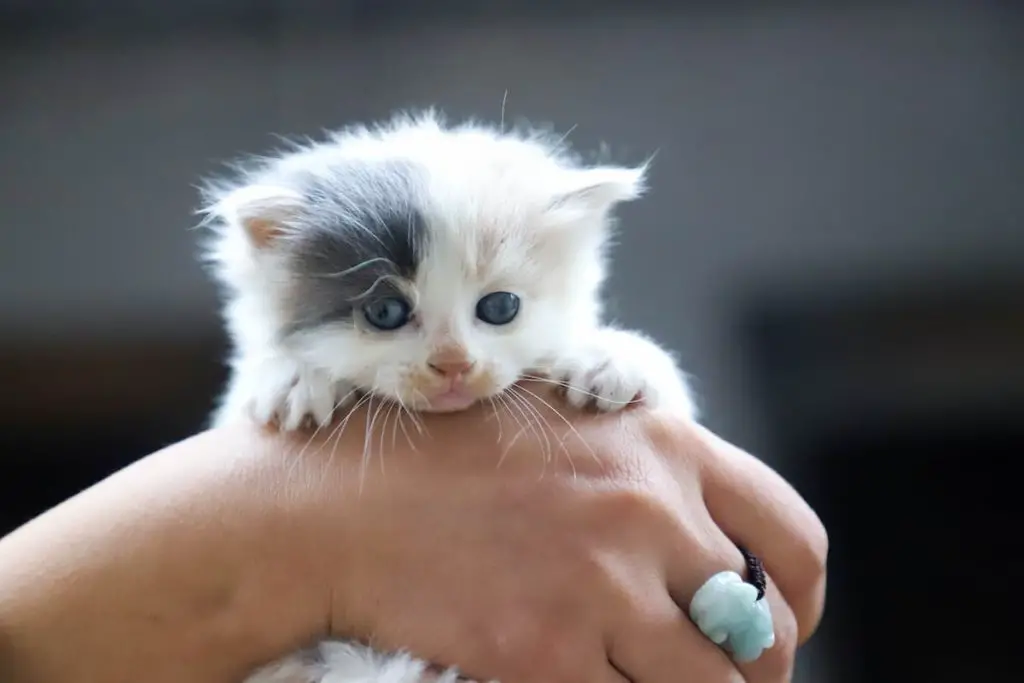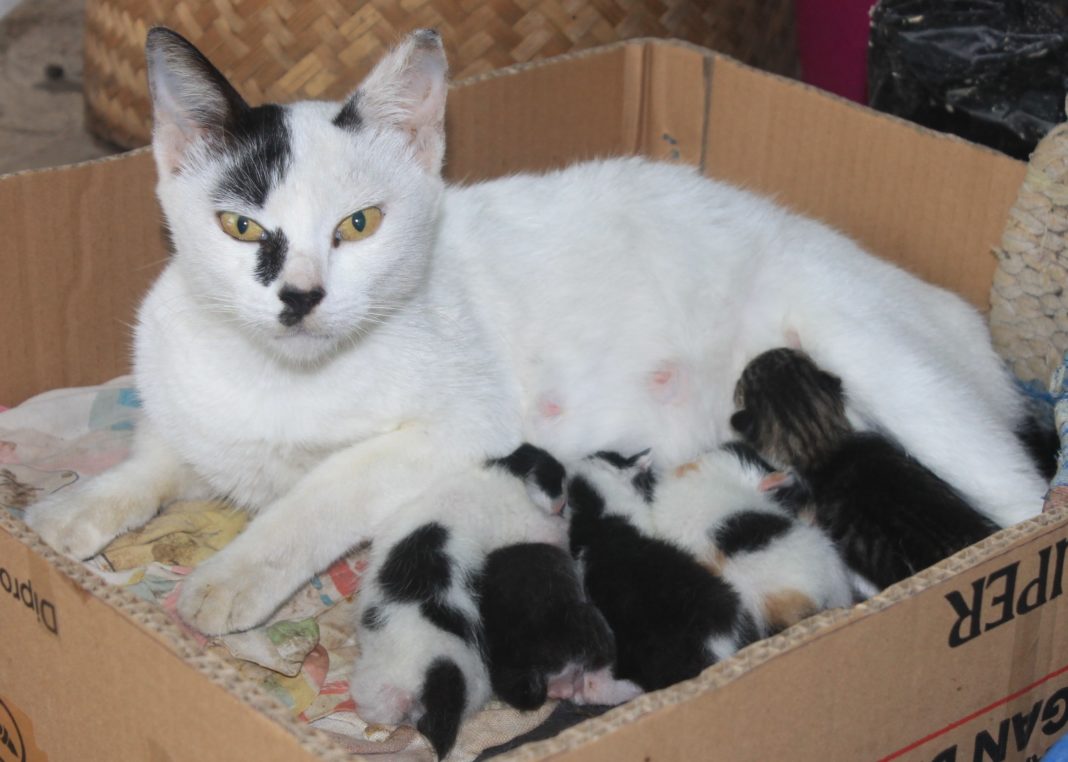Is It Bad If Newborn Kittens Have Fleas?
When you’re around kittens, it can be a wonderful experience watching such innocent little creatures with their eyes shut tight, yet promptly latching on for their first suckle of their mother’s milk.
The whole experience can be quite overwhelming, especially if it’s your first litter. What isn’t so pleasant, however, is spotting fleas on their fur before they are even a day old. How does this happen? Is it bad if newborn kittens have fleas? Are Kittens actually born with fleas?
There’s a common myth that kittens are born with fleas. In reality, kittens can’t be born with fleas. However, if their mum or any other household pet has fleas, then the newborn kittens can become infested immediately after birth. Ideally, you should deflea all of your pets and soft furnishings before a cat gives birth to ensure they don’t suffer from a flea infestation.
If newborn kittens have fleas, it can be quite difficult to treat them as it’s not safe to apply the usual treatments. So, it’s recommended to avoid this happening as best you can.
Why Do My Newborn Kittens Have Fleas?
The only way for a newborn kitten to get fleas is if there’re fleas in your house, on the mother or on any other pets within the household.
Fleas can actually survive without a host for 2-3 months. So even if you have other pets which seem to be clear of fleas, fleas could still be lurking in your house waiting for an unsuspecting host to get within 8 inches!
It certainly doesn’t mean that your house hasn’t been cleaned properly as fleas can tuck out of reach of the vacuum cleaner.

Treating Fleas On Kittens
If you’re reading this post because you’ve found fleas on your kittens, then you’ll want to know the safest way to treat them.
If the kittens have fleas, it’s very likely that the mother has fleas as well and will also need treating. As previously mentioned, kittens are delicate, so removing fleas from them is something that needs to be done with the utmost care.
You shouldn’t use a flea treatment on the kittens and if you’re treating their mum with a spot-on treatment, you need to make sure that the kittens aren’t mobile enough to reach and lick the area where it has been applied.
Experts recommend first trying to remove as many fleas as you can, and squashing them as you go. By carefully holding the kitten gently in a warm bath, soak it up to its neck. You can gently massage a pure, mild soap all over (avoiding the face and ears).
It’s likely that you’ll see fleas scurrying to dry parts during this process. You should pick them off and drown them in a separate cup of water. After rinsing the kitten, dry it thoroughly with a soft towel straight away.
Types of Flea Treatment and How They Work
There are seven types of flea treatment on the market that can be used for treating the mother. Here is a brief overview of each one.
- Topical medications
This treatment is often referred to as spot-on medication and is usually applied at the base of the cat’s neck, between its shoulder blades. They come in a single dose and gradually spread from the spot where they are applied over the entire body. Spot-on medication work by seeping into the sweat glands, gradually releasing over the next few weeks. Tropical treatments are used for fleas, ticks, and mosquitoes. - Oral Medications
This type of treatment needs to be swallowed by the cat each month. Unfortunately, if you’ve ever tried to give an uncooperative cat oral treatment in the past, you may be hesitate at the thought of repeating this on a monthly basis. However, many cat owners have perfected the technique and prefer this treatment to the spot-on type. A common problem when dealing with an uncooperative cat is that you need to pay close attention as they may spit it out. - Sprays
Spray treatments are applied directly to the cat’s coat, avoiding the mouth and eyes. Spray treatments don’t last as long, lasting for a few weeks as long as the cat stays dry. Another disadvantage to this is as it’s a spray a lot of the content can miss the area you’re trying to target, so the dosage you administer may not be as concentrated as other methods. - Powders
Powders need to be applied all over the cat’s body, even between the toes and rubbed in well. This isn’t ideal for many owners as cats aren’t always enamoured by being rubbed in certain areas, such as on their paws and tummies. - Shampoos
These need to be applied to wet fur and will get rid of fleas and their eggs. The downside is that the shampoo needs to be left on for 15 minutes, then thoroughly rinsed… all of this whilst avoiding the cat’s mouth and eyes! - Dips
This is a treatment that is a concentrated liquid that is diluted and poured over the body or applied with a sponge. - Collars
These collars contain a concentrated flea repellent which protects the cat for several months, assuming your cat doesn’t manage to lose the collar. Some owners can find collars problematic as their cats find a way of losing their collars.
Preventing Fleas On Kittens
The best way to ensure that your newborn kittens don’t get fleas, to begin with, is to make sure the mother doesn’t have any. But can a pregnant cat be given flea treatment?
It’s not easy to give an answer as there are some people that say spot-on treatments are safe for pregnant cats, while many people are unsure. To be safe, you should ring your vet for confirmation. Although, you should go ahead and make sure all other household pets are clear of fleas.
A final precaution is to treat your home by going through one room at a time. Keep in mind that your pets should be out of the room being treated as you go through the house. You can find many sprays on the market; your vet can advise you of the best type.








